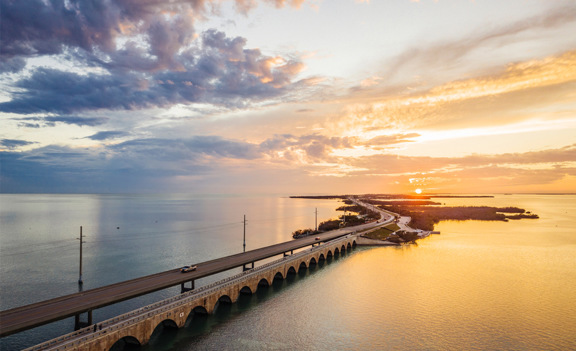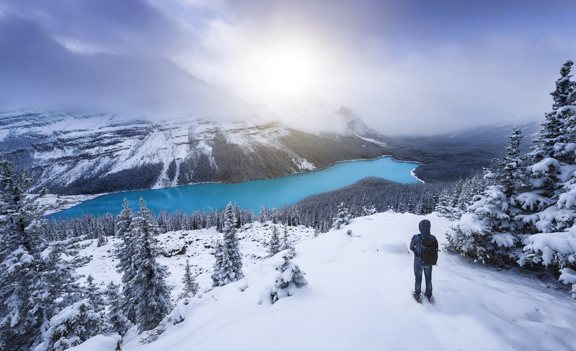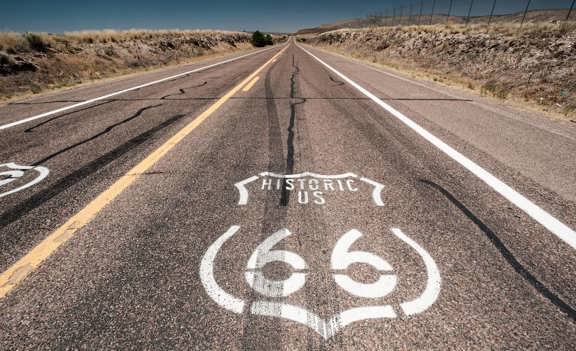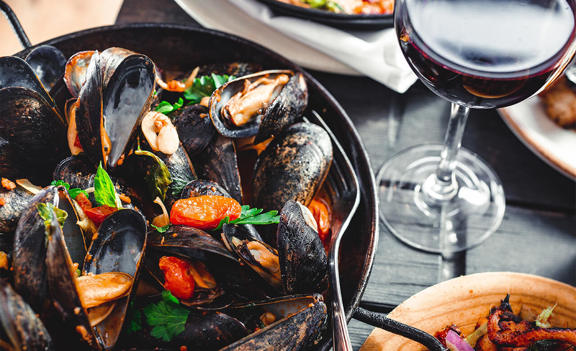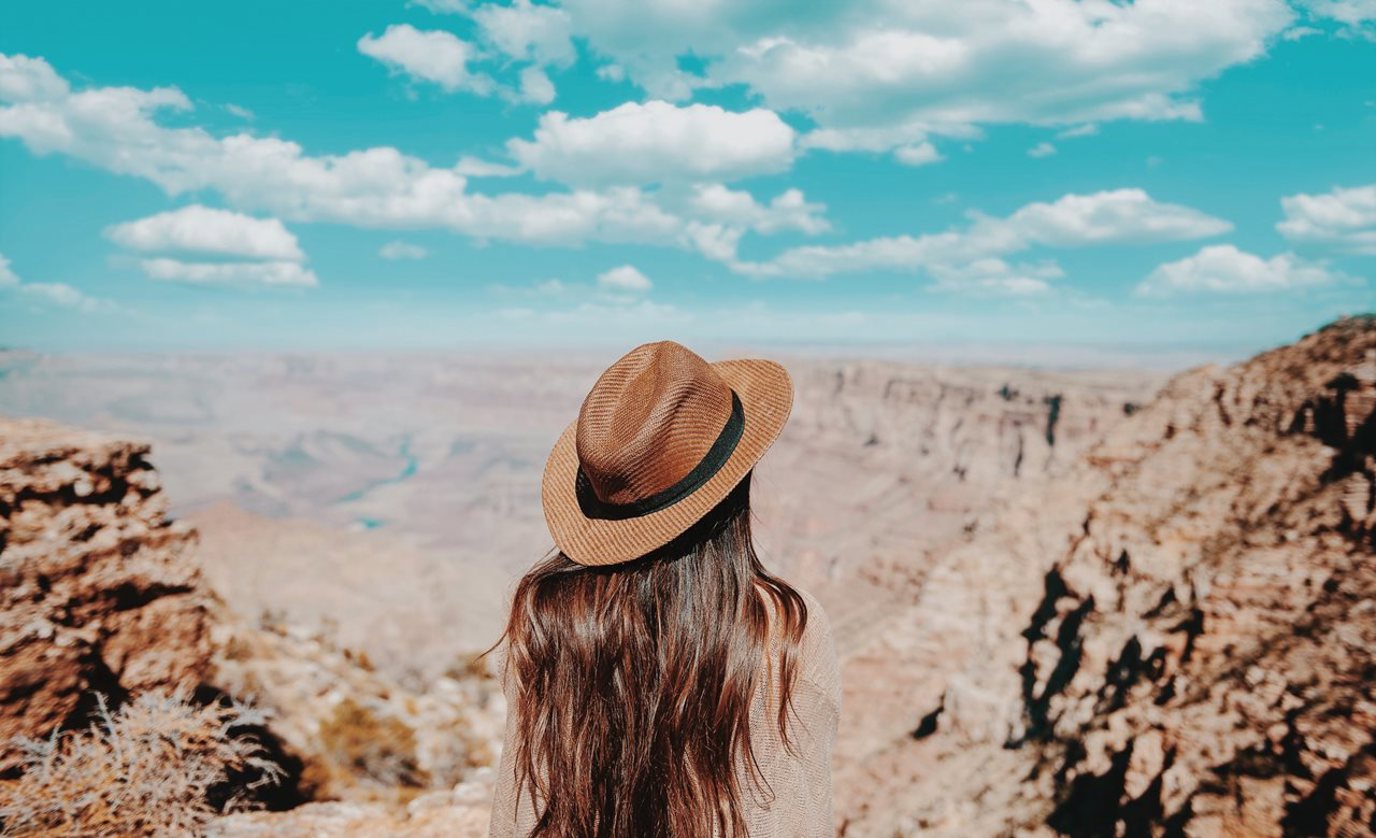
Planning a trip to the Grand Canyon? As one of the 7 Natural Wonders of the World, it’s understandably a wildly popular place to visit. Between 5 and 6 million people visit the Arizona national park every year, which can result in thick crowds, plus traffic and parking headaches.
Despite being a world-famous tourist destination, there are several ways to plan your Grand Canyon trip so that you can enjoy its natural splendor along with tranquility — and few crowds.
Include the North Rim When Planning a Trip to the Grand Canyon
When most people start planning a trip to the Grand Canyon, they focus on the South Rim.
The park’s north and south rims are separated by the canyon itself, and only the South Rim is open year-round. The South Rim is also significantly more developed, with two entrances, the park’s main visitor center, and historic train depot, and several options for tours, campgrounds, lodging, and dining.
While there are certainly plenty of reasons to visit the South Rim, you should strongly consider heading to the North Rim if you’re hoping to enjoy the park with fewer crowds. The North Rim gets just 10% of the park’s annual visitors!
There is one catch: due to extreme winter weather, the North Rim is only open seasonally, typically between mid-May and mid-October.
Another important thing to note is that visiting both the North and South Rims on the same trip requires advance planning and logistics. Driving between them takes about 4.5 hours, covering just over 200 miles. Between May 15 and October 15, the park provides a Rim-to-Rim shuttle service. The shuttle runs once per day in each direction and requires advance reservations.
Things to Do From the North Rim
-
Cruise the 23-mile-long North Rim Scenic Drive, with several overlooks and other stops
-
Pop into the North Rim Visitor Center for trail maps and souvenirs, plus a few great exhibits
-
Enjoy some of the best views in the entire park
-
Bright Angel Point - a short half-mile stroll from the visitor center
-
Cape Royal - a spectacular natural arch that many people consider one of the most unique and picturesque parts of the Grand Canyon; reached via a one-mile hike
-
Point Imperial - the highest point in the park at 8,803 feet elevation, located just off the North Rim Scenic Drive
-
North Rim Campgrounds
The North Rim Campground is the only in-park campsite on the North Rim. It’s open seasonally and has 78 sites that accommodate up to 40-foot RVs. There are no hookups, but there are restrooms, showers, and a camp store.
If you’re looking for full hookups, Kaibab Camper Village on nearby Jacob Lake is the only option in the entire area. It has 58 sites and can accommodate big rigs.
Unique Things to Do From the South Rim
If you’re planning a trip to the Grand Canyon between October and May when the North Rim isn’t open, or you simply want to visit the South Rim, there are plenty of off-the-beaten-path things to do.
Learn From Park Rangers
One of the most valuable resources in the National Park System also happens to be totally free for the public to enjoy: park rangers. And one of the perks of visiting the South Rim is daily ranger talks and other programs!
Whether you encounter a ranger by chance and stop to chat or attend one of the ranger-led programs, this is a fantastic way to learn about the Grand Canyon and the surrounding area. Rangers also have excellent, first-hand recommendations on the best hikes, viewpoints, and things to do in the park.
For program offerings and other events during your visit, check the park calendar.
See the Grand Canyon on Two Wheels
When you’re thinking about how to plan a trip to the Grand Canyon, logistics will undoubtedly include lots of driving, walking, and shuttles. Take a break from the crowds and traffic and rent a bike from Bright Angel Bicycles in the Visitor Center plaza!
Pedaling alongside the rim from the safety of paved trails is a truly unforgettable experience. You can rent for as little as one hour and up to 24 hours, and options include everything from cruiser bicycles and e-bikes to bike trailers for little ones and even jogging strollers.
Bright Angel Bicycles also offers a few guided small-group tours for visitors who prefer more organized activities. Advance reservations are not required but strongly recommended.
Visit Desert View
Commonly referred to as the Grand Canyon East Entrance, Desert View sits 23 miles east of Grand Canyon Village. It’s a much less-visited part of the park but offers plenty of unique things to see and do.
The Desert View Watchtower is the star attraction here, standing 70 feet tall and visible for miles in any direction. It was designed by renowned architect Mary Colter and built in 1932. Today, it houses a park gift shop and hosts cultural demonstrations throughout the year. Demonstrations include Navajo hand weaving, Zuni inlay jewelers, silversmiths, Navajo moccasin makers, and more.
Visitors will also find a market and deli, coffee and ice cream shop, and gas station at Desert View. In addition, there’s a dedicated RV parking lot, something to keep in mind when deciding how to plan a trip to the Grand Canyon.
Tusayan Pueblo Museum
Just three miles west of the Desert View Watchtower, the Tusayan Pueblo Museum is another lesser-visited gem in Grand Canyon.
The museum itself occupies an ancient pueblo, a structure made of adobe and stone. Exhibits inside include Native American artifacts and crafts dating back 2,000-4,000 years, including arrowheads, pottery, household tools, and more. Ruins from a small Puebloan village are also onsite, with the remains of homes and community structures.
Grand Canyon Conservancy Field Institute Programs
Everyone who visits the Grand Canyon takes in the awe-inspiring views from the rim. Some visitors go into the canyon. To elevate your trip and make it completely different, add an element of education or adventure with a GCCFI guided program.
Programs range from family-friendly day hikes to multi-day whitewater rafting trips and skills courses, including night photography and writing workshops.
Go on a Mule Ride
Mules have been synonymous with the Grand Canyon for more than a century, transporting both people and essential supplies into the depths of the canyon. Riding one is among the most memorable ways to experience this natural wonder, and with some advance planning, it’s easy to do!
Choose from a 2-hour ride along the canyon rim or an overnight ride to Phantom Ranch, on the canyon floor. Mule rides are offered year-round, and reservations open 13 months in advance, with nearly all dates selling out shortly after being released.
South Rim Campgrounds
There are several excellent year-round options for RV camping along the South Rim, as well as nearby, outside the park. Some of the best include:
-
Mather Campground - The largest campsite at the Grand Canyon. There are no hookups, but amenities include laundry, a year-round camp store, and a free dump station.
-
Trailer Village RV Park - The only in-park campground that offers full hookups.
-
Desert View Campground - Small campground in the slightly less busy Desert View area at the park’s east entrance.
Go Into the Canyon
Regardless of which part of the park you visit or how you spend your time, one of the best ways to experience the real Grand Canyon is to take a day trip and go down into it. Millions of people see it from up above, but it’s a completely different experience going down below the rim and into the canyon.
Hiking is the most popular method, and there are several options. From the South Rim, the 7.3-mile South Kaibab Trail and 10.3-mile Bright Angel Trail both descend into the canyon. From the North Rim, the North Kaibab Trail is the main hike. While it stretches 14 miles total, you can hike to Coconino Overlook, Supai Tunnel, or Roaring Springs for more manageable day hikes.
Note that ALL hiking into the Grand Canyon is considered strenuous, and hikers should train and prepare. Any time of year, bring sun protection, trekking poles, and plenty of water. A good rule of thumb is one gallon of water, per person, per day — plus a little extra. And remember, no matter what trail you take, you’ll have to hike back out, which means UP in the Grand Canyon!
Whether you go for a hike, book a guided mule trip, or even raft or kayak the Colorado River, you’ll be one of a lucky few who experienced one of the 7 Natural Wonders like an insider — literally!
Plan a Trip to the Grand Canyon With Cruise America
Figuring out how to plan a trip to the Grand Canyon is even more enjoyable when you rent a Cruise America RV. Staying in the park and having the comforts of home at your fingertips lets you maximize your time and see the Grand Canyon from a different perspective. For example, stargazing is incredible here, and camping in an RV means you can enjoy it from just outside your door!
All you have to do is decide on an RV model, pick it up from the most convenient location, and start exploring!

